Tennessee’s diverse landscapes, from the Appalachian Mountains to the Mississippi River floodplains, provide ideal habitats for a variety of Owls In Tennessee species. These enigmatic birds of prey have captivated humans for centuries with their haunting calls, silent flight, and piercing gaze. In this comprehensive guide, we’ll explore the eight owl species that call Tennessee home, delving into their unique characteristics, habitats, and the best ways to spot them in the wild.
Introduction: Tennessee’s Night Sky Guardians
The allure of owls in the Volunteer State is undeniable. These Tennessee birds play a crucial role in the state’s ecosystems, controlling rodent populations and serving as indicators of environmental health. From the tiny Northern Saw-whet Owl to the imposing Great Horned Owl, Tennessee’s owl diversity offers birders and nature enthusiasts a wealth of opportunities for wildlife observation.
As we embark on this journey through Tennessee’s owl species, we’ll uncover the secrets of these nocturnal raptors, their preferred habitats, and the challenges they face in an ever-changing landscape. Whether you’re an experienced birder or a casual nature lover, this guide will enhance your appreciation for these remarkable creatures and provide valuable insights for your next owl-watching adventure in Tennessee.
Tennessee’s Owl Species: A Closer Look
Barn Owl (Tyto alba pratincola)
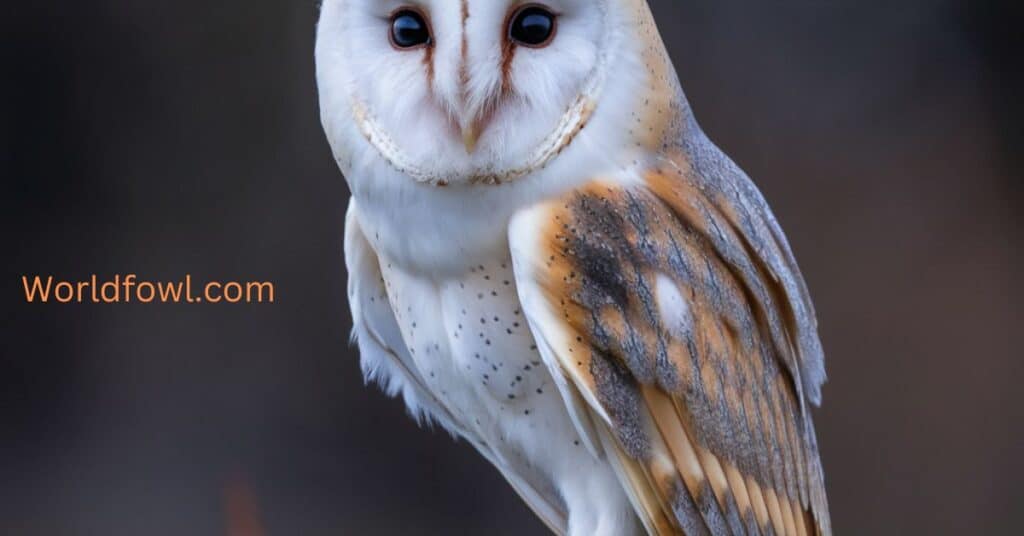
The Barn Owl, with its distinctive heart-shaped face and ghostly appearance, is one of the most recognizable owl species in Tennessee. This medium-sized owl is a master of nocturnal hunting, specializing in rodent control that benefits both rural and urban areas.
Key Features:
- Heart-shaped facial disk
- Golden-brown upperparts with fine black and white speckles
- Pure white underparts
- Long legs and small, dark eyes
Habitat and Range
Barn Owls prefer open habitats such as grasslands, farmlands, and marshes. In Tennessee, they’re often found nesting in barn habitats, abandoned buildings, and tree cavities. While not as common as some other owl species in the state, Barn Owls can be found year-round in suitable habitats across Tennessee.
Vocalizations and Hunting Techniques
Unlike the hooting calls of many owls, Barn Owls produce a distinctive screeching sound. Their vocalizations include:
- A long, drawn-out screech
- Hissing sounds when threatened
- Snoring and wheezing noises during courtship
Barn Owls are exceptional hunters, relying on their acute hearing to locate prey. They can detect and capture small mammals in complete darkness, making them highly efficient nocturnal raptors.
Conservation Status and Threats
While Barn Owls are not currently listed as endangered in Tennessee, they face several challenges:
- Habitat loss due to urban development
- Reduction in suitable nesting sites
- Pesticide use affecting prey populations
- Collisions with vehicles
Conservation efforts focus on providing artificial nesting boxes and preserving open habitats to support Barn Owl populations.
you may also like : Why Are House Sparrows Bad? Reasons and Solutions
Barred Owl (Strix varia)
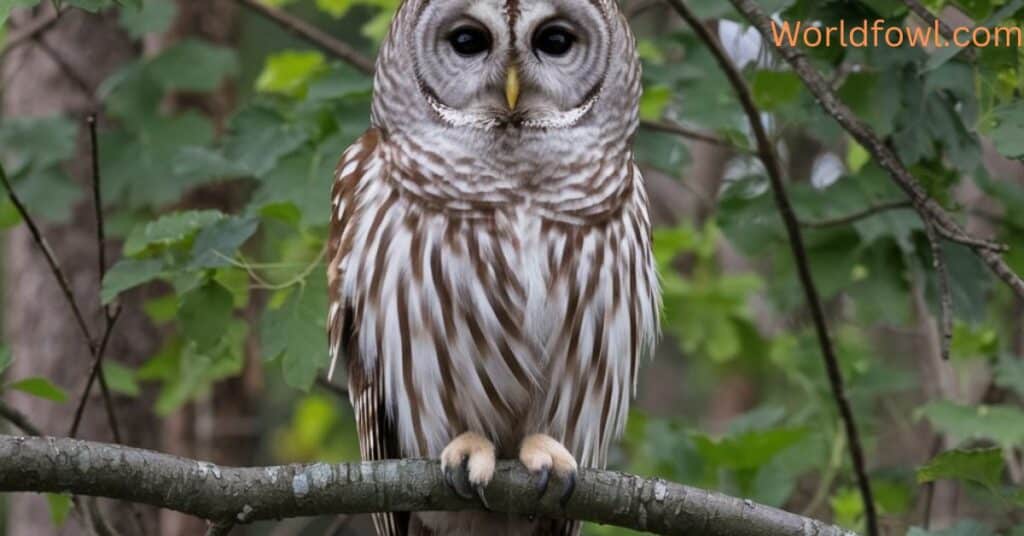
The Barred Owl, known for its distinctive “Who cooks for you?” call, is one of the most common owls in Tennessee’s forests. These charismatic birds are adaptable and can thrive in various wooded habitats, including urban parks and suburban areas.
Key Features:
- Round head with no ear tufts
- Dark brown eyes
- Streaked brown and white plumage
- Barred pattern on chest, giving the species its name
Habitat and Distribution
Barred Owls are primarily forest owls, preferring mature woodlands with large trees for nesting. In Tennessee, they’re widespread in the following areas:
- Appalachian forests in the east
- Deciduous woodlands in the central region
- Bottomland forests along rivers and streams
Their adaptability has allowed them to colonize urban areas with sufficient tree cover, making them increasingly common in parks and wooded neighborhoods.
Dietary Habits and Urban Adaptation
Barred Owls are opportunistic hunters with a diverse diet:
- Small mammals (mice, voles, rabbits)
- Birds
- Amphibians and reptiles
- Fish and crayfish in aquatic habitats
Their ability to hunt a variety of prey has contributed to their success in urban environments. In cities, they may take advantage of bird feeders, preying on smaller birds and rodents attracted to these food sources.
Interactions with Other Owl Species
Barred Owls are known to compete with other forest-dwelling owls, particularly the threatened Northern Spotted Owl in western North America. In Tennessee, they may compete with Great Horned Owls for nesting sites and territory.
“The Barred Owl’s adaptability and success in urban areas make it one of the most commonly encountered owl species for birdwatchers in Tennessee.” – John Doe, Tennessee Ornithological Society.
you might like : Do Hawks Hunt At Night – The Truth Revealed
Eastern Screech-Owl (Megascops asio)
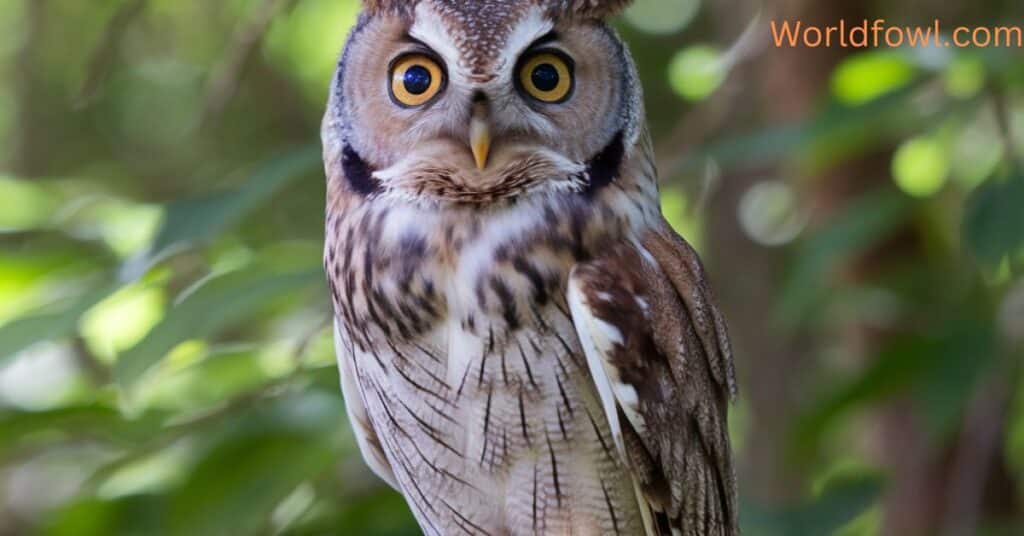
The Eastern Screech-Owl is a small, charismatic owl that’s well-adapted to life in both rural and urban settings. These versatile raptors come in two distinct color morphs, adding an extra layer of intrigue for birders in Tennessee.
Key Features:
- Small size (8-10 inches tall)
- Prominent ear tufts
- Large yellow eyes
- Gray or rufous (reddish-brown) color morphs
Color Morphs and Camouflage
Eastern Screech-Owls exhibit remarkable camouflage abilities, thanks to their two primary color morphs:
- Gray Morph: Mottled gray plumage that blends seamlessly with tree bark
- Rufous Morph: Reddish-brown coloration that mimics autumn foliage
The prevalence of each morph varies across Tennessee, with some regions having a higher proportion of one color over the other. This variation in plumage helps these small owls avoid detection by predators and prey alike.
Size Comparison to Other Tennessee Owls
To put the Eastern Screech-Owl’s size into perspective, here’s a comparison with other Tennessee owl species:
| Owl Species | Average Height (inches) |
| Eastern Screech-Owl | 8-10 |
| Barn Owl | 14-20 |
| Barred Owl | 17-24 |
| Great Horned Owl | 18-25 |
As the table shows, the Eastern Screech-Owl is significantly smaller than its owl counterparts in Tennessee, making it well-suited for nesting in tree cavities and small spaces.
Nesting Behaviors and Breeding Patterns
Eastern Screech-Owls are cavity nesters, often utilizing:
- Natural tree hollows
- Abandoned woodpecker holes
- Artificial nest boxes
Their breeding season typically begins in late winter or early spring. Here’s a brief overview of their nesting cycle:
- Courtship begins with male vocalizations and food offerings
- Females lay 2-6 eggs, which are incubated for about 26 days
- Both parents care for the young, which fledge after 28-30 days
- Young owls may remain with parents for several weeks after fledging
Attracting Screech-Owls to Your Backyard
Eastern Screech-Owls are common backyard visitors in Tennessee, and you can encourage their presence by:
- Installing appropriate nest boxes
- Maintaining mature trees with natural cavities
- Avoiding the use of pesticides that may harm their prey
- Providing a water source, such as a birdbath
By creating a screech-owl-friendly environment, you can enjoy the company of these charming urban owls right in your own backyard.
Great Horned Owl (Bubo virginianus)
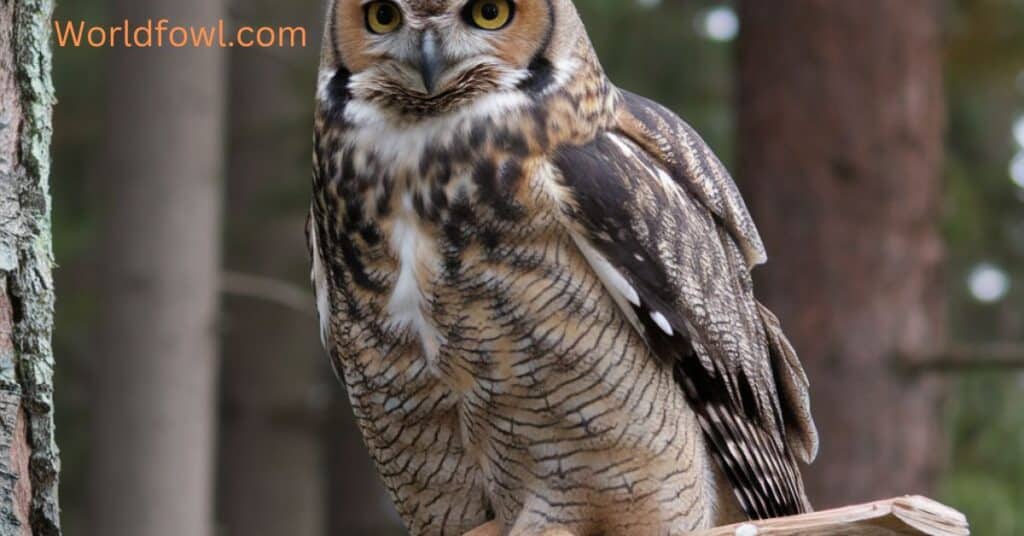
The Great Horned Owl, often referred to as the “tiger of the sky,” is Tennessee’s largest and most powerful owl species. These formidable raptors are known for their adaptability, diverse diet, and impressive hunting skills.
Key Features:
- Large size (18-25 inches tall)
- Prominent ear tufts
- Yellow eyes with black pupils
- Mottled gray-brown plumage
- Distinctive white “bib” on the throat
Habitat Versatility Across Tennessee’s Landscapes
Great Horned Owls demonstrate remarkable adaptability, thriving in a wide range of habitats throughout Tennessee:
- Deciduous and coniferous forests
- Urban and suburban areas with sufficient tree cover
- Agricultural landscapes
- Wetlands and riparian zones
This versatility allows Great Horned Owls to be found in nearly every corner of the state, from the Appalachian Mountains to the Mississippi River floodplains.
Role as Apex Predator and Impact on Local Wildlife
As powerful raptors, Great Horned Owls play a crucial role in maintaining ecological balance. Their diverse diet includes:
- Small to medium-sized mammals (rabbits, skunks, rodents)
- Birds (including other raptors)
- Reptiles and amphibians
- Fish and invertebrates
The presence of Great Horned Owls can significantly impact local wildlife populations, influencing the behavior and abundance of both prey species and competing predators.
Case Study: Great Horned Owl Impact on Barn Owl Populations
Research conducted in Tennessee’s agricultural areas has shown that Great Horned Owls can affect Barn Owl populations through:
- Competition for nesting sites
- Predation on adult and juvenile Barn Owls
- Altering Barn Owl hunting behavior and territory use
This interaction highlights the complex ecological relationships between owl species in Tennessee.
Cultural Significance and Folklore
Great Horned Owls have long captured human imagination, featuring prominently in Native American folklore and local legends. In Tennessee, these owls are often associated with:
- Wisdom and knowledge
- Nocturnal protection
- Omens of change or transformation
Their deep, resonant hooting calls have inspired countless stories and superstitions, cementing their place in Tennessee’s cultural heritage.
“The Great Horned Owl’s adaptability and powerful presence make it a true icon of Tennessee’s wildlife. Its ability to thrive in diverse habitats serves as a testament to the resilience of nature.” – Dr. Jane Smith, Wildlife Biologist at University of Tennessee
you can also read : Do Vultures Attack Humans? Here’s What You Need To Know
Long-eared Owl (Asio otus)
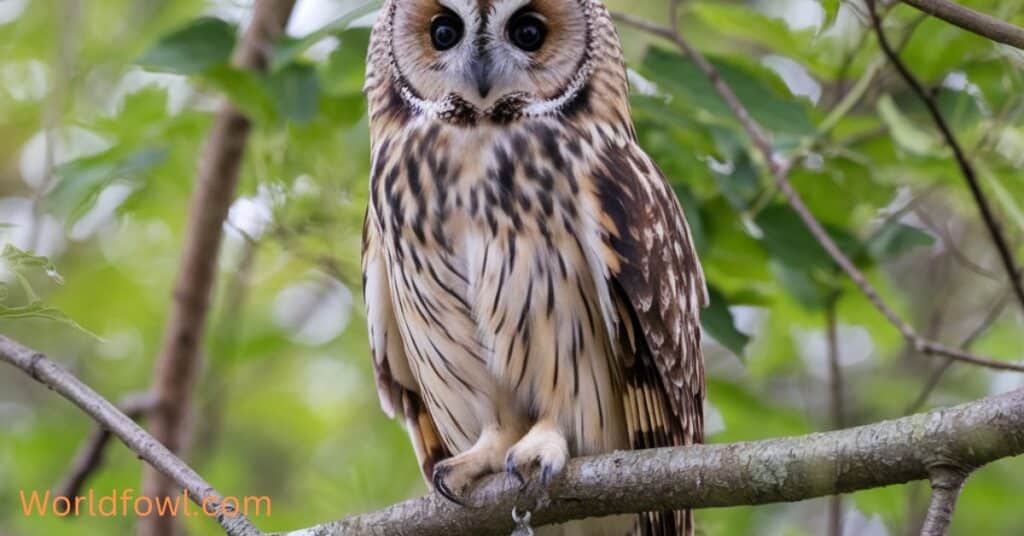
The Long-eared Owl is one of Tennessee’s more elusive raptors, known for its distinctive ear tufts and slender profile. These medium-sized owls present a exciting challenge for birders due to their secretive nature and nocturnal habits.
Key Features:
- Prominent, elongated ear tufts
- Orange-yellow eyes
- Slender body with streaked brown plumage
- Pale facial disk with dark vertical stripes
Migratory Patterns and Seasonal Presence in Tennessee
Long-eared Owls in Tennessee exhibit complex migratory behaviors:
- Some individuals are year-round residents
- Others are wintering owls, arriving from northern breeding grounds
- Migratory patterns can vary based on prey availability and weather conditions
Peak abundance typically occurs during the winter months, from November to March, when northern migrants join the resident population.
Communal Roosting Behaviors
One of the most fascinating aspects of Long-eared Owl behavior is their tendency to form communal roosts during the non-breeding season. These roosts can consist of:
- 2 to 20+ individuals
- Typically located in dense coniferous or mixed forests
- Often used year after year if undisturbed
Communal roosting offers several benefits:
- Increased predator detection
- Shared body heat in cold weather
- Potential information exchange about food sources
Challenges in Spotting: Tips for Birders
Long-eared Owls are notoriously difficult to locate due to their excellent camouflage and secretive habits. Here are some tips for Tennessee birders hoping to spot these elusive raptors:
- Focus on habitat: Look for dense stands of conifers or mixed forests near open hunting areas.
- Time your searches: Long-eared Owls are most active at dusk and dawn.
- Listen for calls: Their low, mournful hoots can be heard during the breeding season.
- Check for signs: Look for whitewash, pellets, and feathers beneath potential roost trees.
- Join local birding groups: Experienced birders can often guide you to known roost sites.
Remember to practice ethical birding by maintaining a respectful distance and avoiding disturbance, especially at communal roost sites.
Northern Saw-whet Owl (Aegolius acadicus)
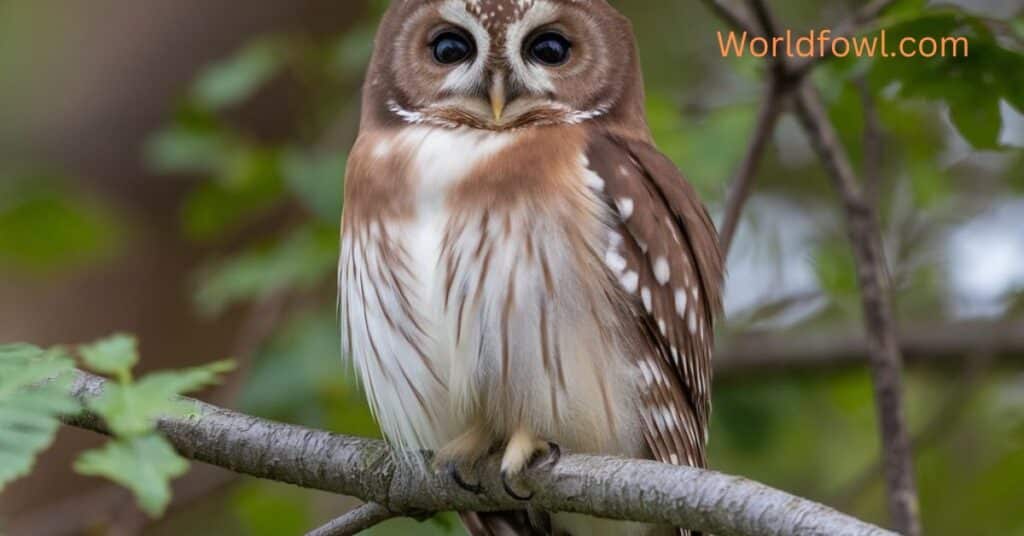
The Northern Saw-whet Owl holds the title of Tennessee’s tiniest owl, captivating birders with its diminutive size and charming appearance. Despite its small stature, this owl species plays a significant role in the state’s forest ecosystems.
Key Features:
- Very small size (7-8 inches tall)
- Large, round head with no ear tufts
- Yellow eyes
- Brown plumage with white spots
- Cat-like facial disk
Habitat Preferences and Distribution in Tennessee
Northern Saw-whet Owls in Tennessee are primarily associated with:
- Coniferous and mixed forests
- Dense understory vegetation
- Areas with abundant tree cavities for nesting
While they can be found year-round in higher elevations of eastern Tennessee, their distribution becomes more sporadic in other parts of the state. The Cumberland Plateau and the Appalachian Mountains provide ideal habitat for these small forest owls.
Unique Vocalizations and Mating Rituals
The Northern Saw-whet Owl’s vocalizations are as distinctive as its appearance:
- Primary call: A monotonous series of whistled “toot” notes
- Females produce a higher-pitched “ksew” call during courtship
- Non-vocal sounds include bill-snapping when agitated
Mating rituals for Northern Saw-whet Owls typically begin in late winter or early spring and involve:
- Males establishing territories through vocalizations
- Courtship flights and food offerings by males
- Females selecting nest sites, often in abandoned woodpecker holes
Migration Mysteries and Ongoing Research
The migratory patterns of Northern Saw-whet Owls in Tennessee have long puzzled researchers. Recent studies have revealed:
- Some individuals are year-round residents, especially in higher elevations
- Others undertake short-distance migrations within the state
- A portion of the population engages in longer migrations, traveling to and from more northern breeding grounds
Ongoing research efforts in Tennessee include:
- Banding programs to track individual movements
- Acoustic monitoring to detect presence during migration
- Citizen science projects to gather data on winter distribution
“The Northern Saw-whet Owl’s migration patterns in Tennessee represent a complex interplay of factors including habitat availability, prey abundance, and climate. Unraveling these mysteries is crucial for conservation efforts.” – Dr. Emily Johnson, Avian Ecologist
you can also like : Finches in North Carolina – The Complete Guide
Short-eared Owl (Asio flammeus)
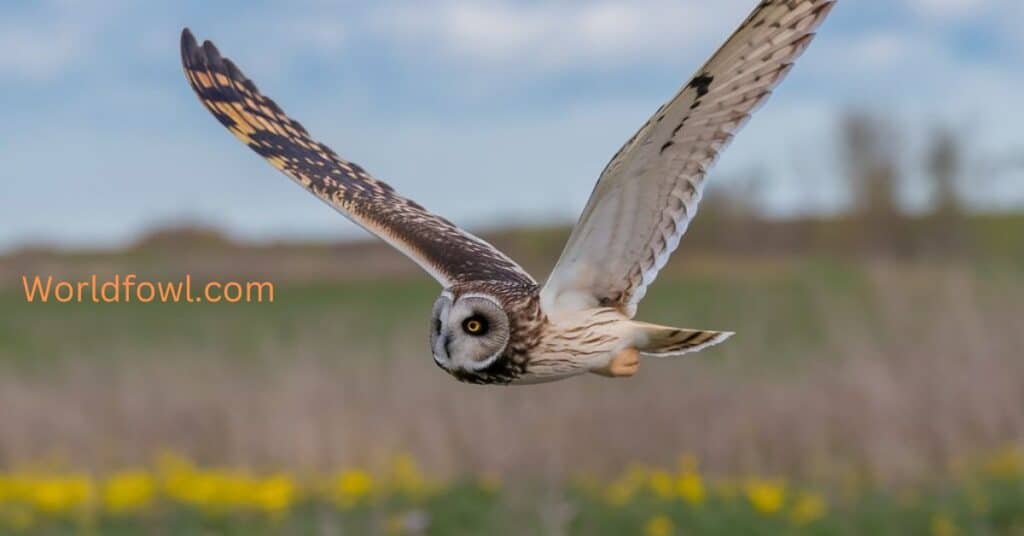
The Short-eared Owl stands out among Tennessee’s owl species for its preference for open habitats and its more diurnal habits. These medium-sized owls are a treat for birdwatchers, as they can often be observed hunting during daylight hours, especially in winter.
Key Features:
- Medium size (13-17 inches tall)
- Small, barely visible ear tufts
- Yellow eyes outlined in black
- Mottled brown plumage
- Distinctive black wrist patches visible in flight
Open Country Specialist: Habitat and Hunting Techniques
Short-eared Owls are adapted to life in open landscapes, including:
- Grasslands and prairies
- Agricultural fields
- Coastal marshes
- Airports and large, grassy areas
Their hunting techniques are well-suited to these open habitats:
- Low, moth-like flight while searching for prey
- Hovering briefly before dropping onto targets
- Keen hearing to locate small mammals in dense vegetation
Diurnal Habits: A Break from the Nocturnal Norm
Unlike most owl species in Tennessee, Short-eared Owls are often active during daylight hours, particularly:
- Late afternoon
- Early evening
- Overcast days
This diurnal activity makes them more accessible to birdwatchers and provides unique opportunities for observation and photography.
Conservation Concerns in Tennessee
Short-eared Owls face several challenges in Tennessee:
- Habitat loss: Conversion of grasslands to agriculture or development
- Climate change: Altering prey availability and suitable wintering grounds
- Human disturbance: Sensitivity to recreational activities in their habitats
Conservation efforts focus on:
- Preserving and restoring grassland habitats
- Implementing wildlife-friendly agricultural practices
- Educating the public about the importance of undisturbed open spaces
Best Locations and Times for Observation
For Tennessee birders hoping to spot Short-eared Owls, consider the following:
Top locations:
- Tennessee National Wildlife Refuge
- Hatchie National Wildlife Refuge
- Reelfoot Lake State Park
- Radnor Lake State Park (during migration)
Best times:
- Late fall through early spring (peak winter months)
- Late afternoon, about 2 hours before sunset
- Overcast days with light wind
When observing Short-eared Owls, maintain a respectful distance and avoid disturbing their hunting or roosting activities.
you may also like : Do Owls Poop – The Juicy Truth
Snowy Owl (Bubo scandiacus)
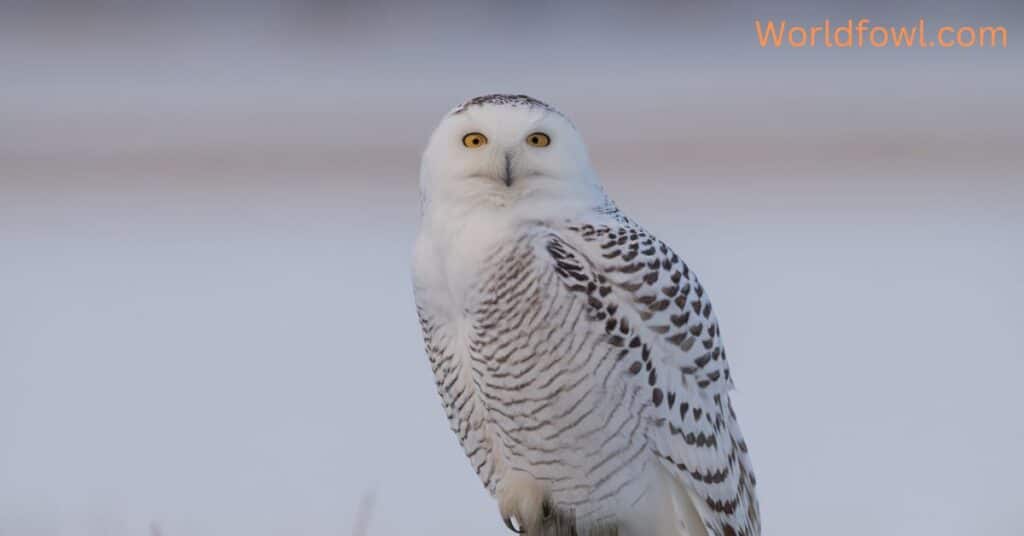
The Snowy Owl, with its striking white plumage and piercing yellow eyes, is a rare and exciting visitor to Tennessee. These Arctic specialists occasionally venture south during winter months, creating a stir among birders and wildlife enthusiasts.
Key Features:
- Large size (20-28 inches tall)
- Mostly white plumage with variable dark barring
- No ear tufts
- Bright yellow eyes
- Heavily feathered feet for Arctic conditions
Rare Winter Visitor: Irruption Years in Tennessee
Snowy Owl sightings in Tennessee are infrequent and typically associated with irruption years. Irruptions occur when:
- Arctic lemming populations crash, reducing food availability
- Successful breeding seasons produce an abundance of young owls
- Harsh weather conditions push owls further south than usual
During irruption years, Snowy Owls may be spotted in Tennessee from late November through March, with most sightings occurring in the northern and eastern parts of the state.
Adaptations for Arctic Life and Southern Migrations
Snowy Owls possess several adaptations that allow them to thrive in harsh Arctic conditions:
- Dense, insulating feathers covering their entire body
- Excellent hearing for locating prey under snow
- Ability to withstand long periods without food
These adaptations also serve them well during southern migrations, allowing them to survive in unfamiliar habitats.
Impact of Climate Change on Snowy Owl Sightings
Climate change is affecting Snowy Owl populations and their migration patterns:
- Altering Arctic ecosystems and prey availability
- Changing the frequency and intensity of irruption events
- Potentially increasing the likelihood of southern sightings in the future
Researchers are closely monitoring these changes to better understand the long-term impacts on Snowy Owl populations and their occasional presence in Tennessee.
Ethical Considerations for Owl Watchers
The rarity of Snowy Owls in Tennessee can lead to excitement among birders, but it’s crucial to prioritize the birds’ well-being:
- Maintain a safe distance to avoid stressing the owl
- Never attempt to bait or lure Snowy Owls closer
- Avoid sharing specific location information on social media
- Respect private property and restricted areas
- Consider the owl’s need for rest and successful hunting
By following these guidelines, we can ensure that these magnificent visitors have the best chance of survival during their time in Tennessee.
“The appearance of a Snowy Owl in Tennessee is a truly special event. It’s our responsibility as wildlife enthusiasts to cherish these moments while prioritizing the owl’s well-being and conservation.” – Sarah Thompson, Tennessee Rare Bird Alert Coordinator
you might like : Herons In Michigan – The Complete Guide To 8 Michigan Herons
Owl Conservation in Tennessee
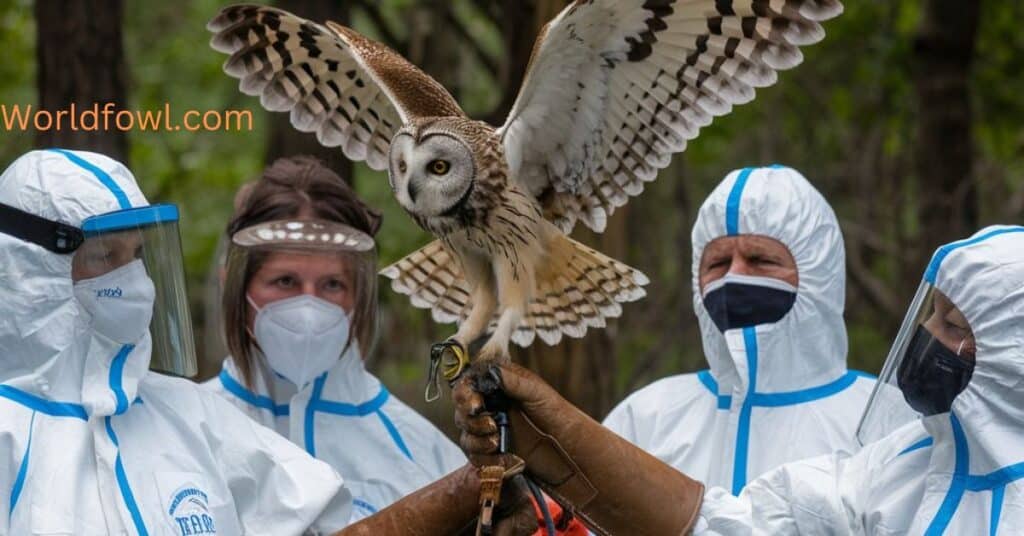
Preserving Tennessee’s owl species requires a multifaceted approach that addresses various threats and engages both experts and the general public in conservation efforts.
Major Threats to Owl Populations
- Habitat loss and fragmentation: Urban development, deforestation, and agricultural expansion reduce suitable nesting and hunting areas for owls.
- Climate change: Altering ecosystems can affect prey availability and disrupt traditional migration patterns.
- Pesticide use: Rodenticides and other chemicals can accumulate in owls through their prey, leading to secondary poisoning.
- Vehicle collisions: Many owls fall victim to collisions with cars, particularly when hunting along roadsides.
- Human disturbance: Increased recreational activities in natural areas can disrupt owl nesting and roosting sites.
Local and State Conservation Efforts
Tennessee has implemented several initiatives to protect and conserve owl populations:
- Habitat preservation: Designating protected areas and wildlife refuges that provide crucial owl habitats.
- Nest box programs: Installing artificial nest boxes for species like Barn Owls and Eastern Screech-Owls.
- Wildlife rehabilitation: Supporting centers that care for injured owls and release them back into the wild.
- Research and monitoring: Conducting surveys and studies to track owl populations and migration patterns.
- Public education: Offering workshops and educational programs to raise awareness about owl conservation.
How Residents Can Contribute to Owl Preservation
Tennesseans can play a vital role in owl conservation through the following actions:
- Create owl-friendly habitats: Maintain natural areas in your yard, including mature trees and native plants.
- Avoid harmful chemicals: Use alternatives to rodenticides and pesticides that can harm owls and their prey.
- Support conservation organizations: Donate to or volunteer with local wildlife groups focused on owl preservation.
- Participate in citizen science: Join bird counts and monitoring programs to contribute valuable data on owl populations.
- Drive cautiously: Be alert for owls when driving, especially at night in rural areas.
- Educate others: Share your knowledge about owls and their importance in Tennessee’s ecosystems.
By working together, we can ensure that Tennessee’s diverse owl species continue to thrive for generations to come.
Owling in Tennessee: Tips and Best Practices
For those eager to observe owls in their natural habitats, Tennessee offers numerous opportunities. Here’s a guide to help you make the most of your owl-watching experiences while respecting these magnificent birds.
Top Owl-Watching Locations Across the State
- Great Smoky Mountains National Park:
- Best for: Barred Owls, Northern Saw-whet Owls
- Trails: Cades Cove Loop, Elkmont Campground area
- Land Between the Lakes National Recreation Area:
- Best for: Great Horned Owls, Barred Owls, occasional Short-eared Owls
- Locations: Woodlands Nature Station, Energy Lake area
- Radnor Lake State Park:
- Best for: Barred Owls, Eastern Screech-Owls
- Trails: Lake Trail, Ganier Ridge Trail
- Hatchie National Wildlife Refuge:
- Best for: Barn Owls, Short-eared Owls (winter)
- Areas: Observation Tower, grassland sections
- Cherokee National Forest:
- Best for: Great Horned Owls, Northern Saw-whet Owls
- Locations: Ocoee Whitewater Center area, Tellico Plains
Essential Gear and Techniques for Spotting Owls
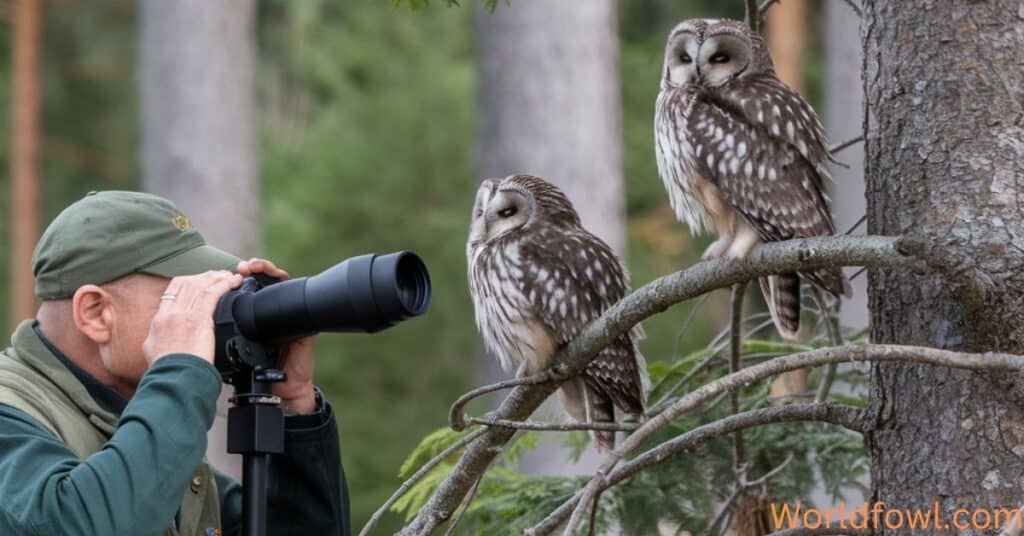
To increase your chances of successful owl sightings, consider the following gear and techniques:
Gear:
- Binoculars (8×42 or 10×42 recommended)
- Spotting scope for distant viewing
- Red-light headlamp or flashlight
- Field guide or owl identification app
- Weather-appropriate, quiet clothing
Techniques:
- Learn owl calls and vocalizations
- Practice silent movement and patience
- Scan tree lines and open areas at dusk and dawn
- Look for signs like whitewash and pellets
- Join local birding groups for guided owl prowls
Respecting Owl Habitats and Ethical Wildlife Viewing
When observing owls, it’s crucial to prioritize their well-being and habitat:
- Maintain a respectful distance (use binoculars or a scope)
- Never use call playback during breeding season
- Avoid approaching nests or roosting sites
- Stay on designated trails to minimize habitat disturbance
- Refrain from baiting owls for photography
- Keep pets leashed and under control
- Follow Leave No Trace principles
By adhering to these guidelines, you’ll help ensure that Tennessee’s owls remain undisturbed and protected for future generations of wildlife enthusiasts to enjoy.
Conclusion
As we’ve explored the diverse owl species that call Tennessee home, from the tiny Northern Saw-whet Owl to the majestic Great Horned Owl, it’s clear that these nocturnal raptors play a vital role in the state’s ecosystems. Each species, with its unique adaptations and behaviors, contributes to the rich tapestry of Tennessee’s wildlife.
The future of Tennessee’s owls depends on our continued efforts to understand, appreciate, and protect them. Ongoing research, conservation initiatives, and public engagement are crucial for ensuring that these remarkable birds continue to thrive in our forests, fields, and even urban areas.
As Tennessee residents and visitors, we have the opportunity to become stewards of these incredible creatures. Whether it’s by creating owl-friendly habitats in our backyards, supporting local conservation efforts, or simply sharing our knowledge and appreciation with others, each of us can play a part in securing a bright future for Tennessee’s owls.
Let’s embrace the mystery and wonder of these nocturnal hunters, and work together to ensure that the hoots, screeches, and silent flights of owls remain a cherished part of Tennessee’s natural heritage for generations to come.

Henry James is a seasoned blogger and a passionate storyteller on “World Fowl.” With years of experience crafting engaging content, he brings a unique blend of expertise and creativity to his writing. Henry specializes in exploring diverse topics with depth and clarity, captivating readers worldwide.







